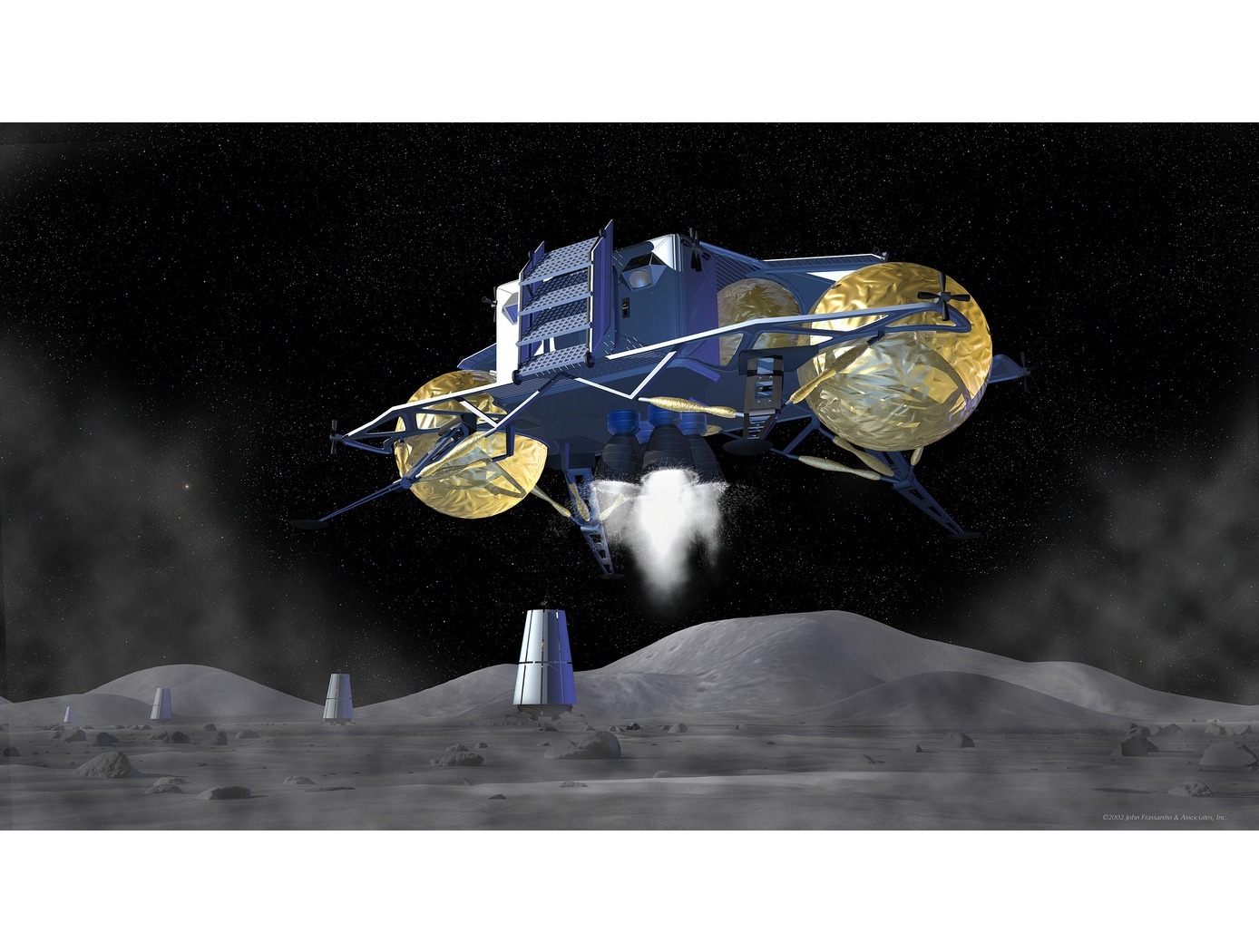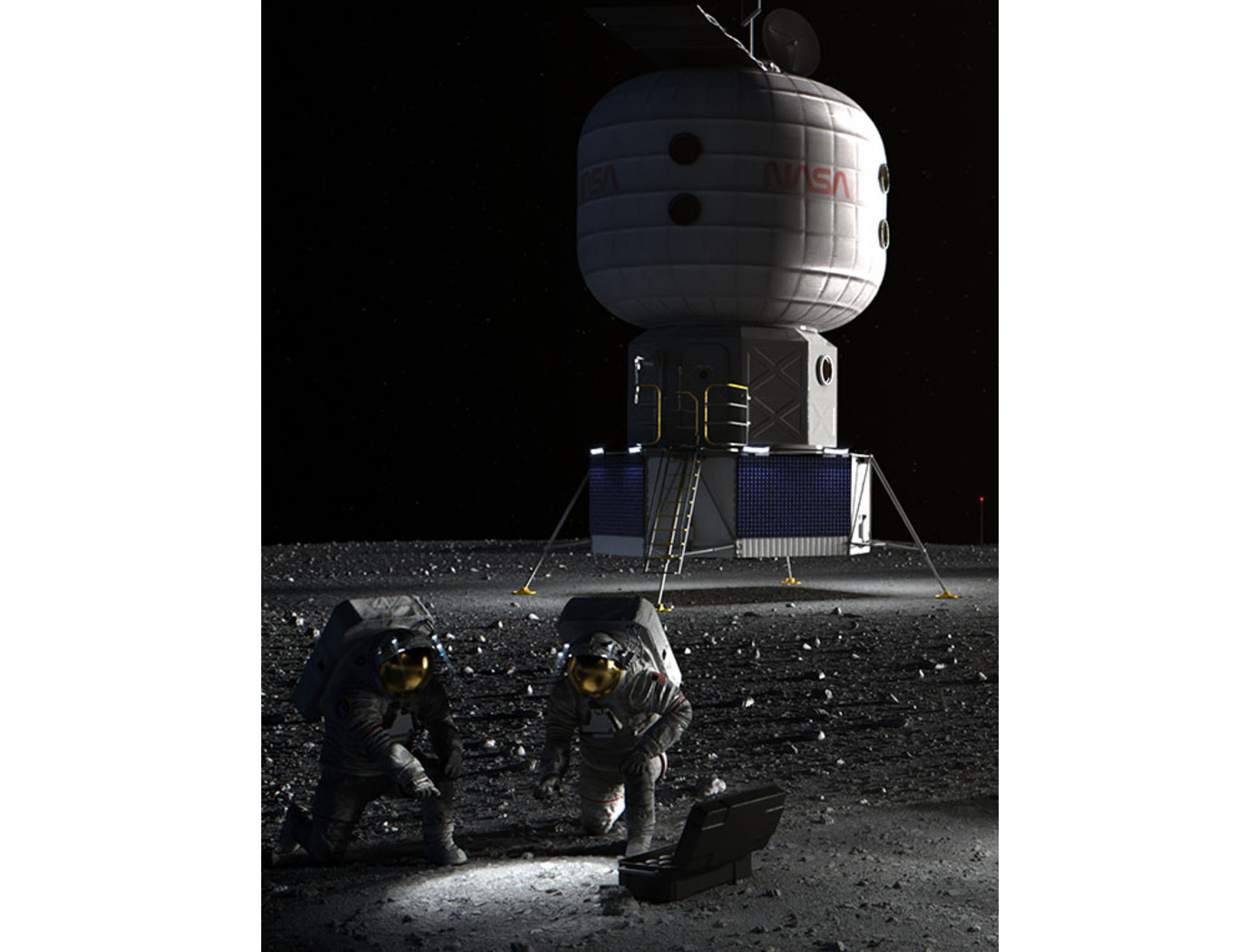Search
Manufacturing

Lunar Landing Pads
The jointly developed interlocking paver design consists of a molded solid material with tapered interlocking features that interface with features of an opposite gender in three orthogonal directions. This establishes a toleranced connection between the pavers that locks down six degrees of freedom.
More specifically, the system consists of two types of pavers: polygon and spacer pavers. Both are symmetrical about the longitudinal and transverse axes and are designed to interlock securely with one another in a checkerboard pattern. The polygon paver features an octagonal top level and a rectangular bottom level with protrusions and recessed notches. The spacer paver has an elongated center portion with isosceles trapezoid extensions on the top level and a rectangular bottom level with protrusions and notches. The interlocking design locks down six degrees of freedom, providing enhanced stability and preventing the flow of exhaust gases between the seams to mitigate erosion of the underlying regolith.
The pavers could be constructed leveraging in-situ resource utilization (ISRU). Lunar regolith has been identified as a potential construction material. Additionally, the pavers could be installed via robotic assembly, reducing the need for human labor in harsh environments.
manufacturing

Regolith-Polymer 3D Printing
The invention consists of a 3D print head apparatus that heats and extrudes a regolith-polymer (or other) mixture as part of an additive manufacturing process. The technology includes a securing mechanism, hopper, nozzle, barrel, and heating system. The securing mechanism attaches to a wrist joint of a robotic arm. The hopper, connected to the securing mechanism, has a cavity and a lower aperture. The barrel is an elongated, hollow member with its first end connected to the hopper's lower aperture and its second end connected to the nozzle's upper aperture. The heating system is positioned along the barrel and comprises a heater, thermocouple, insulator, and heating controller. The heating controller activates the heater based on input signals received from the thermocouple.
The print head apparatus also includes a feed screw, drive shaft, and motor. The feed screw is positioned within the elongated hollow member of the barrel, and the drive shaft transmits torque to the feed screw. The motor provides torque to the drive shaft.
An agitator is secured to the drive shaft, facilitating the consistent movement and mixing of the regolith-polymer mixture in the hopper. The nozzle includes a tube with an open end and an occluded end, allowing the mixture to be extruded through the lower aperture.
The jointly developed 3D print head technology enables efficient, large-scale additive construction using in-situ resources, such as regolith or other materials. The innovation reduces the need for transporting materials from Earth and allows for sustainable habitat development on the Moon or Mars. Given its adaptability to different crushed rock-polymer materials, the invention may also serve as an alternative to conventional Portland concrete construction on Earth.
Mechanical and Fluid Systems

Passive Fuel Cell Surface Power System (PaCeSS)
NASA’s envisioned Lunar and Martian surface operations will require constant and reliable power systems. Traditional power architectures, including solar cells and batteries, cannot be solely relied upon due to the lengthy lunar nights and challenging thermal environments. How-ever, fuel cells, including primary fuel cells and regenerative fuel cells, represent a promising means for energy generation and storage on planetary and lunar surfaces.
PaCeSS could further improve mission flexibility by significantly enhanc-ing reliability and longevity with fully passive fuel cell power generation capability. Test systems have been built to validate the performance characteristics of various PaCeSS technology elements, and many of the component materials have already been characterized. Some of these novel technology elements already demonstrated include a two-phase thermosyphon operation in fuel cell conditions, a passive shape memory actuator operation using two-phase water, and a shape memory alloy radiator turndown.
Although the current design of the shape memory alloy actuated rad-iator system is dependent on partial gravity and space-like environments where heat rejection is performed primarily via radiation, there may be ways of using the same basic system for controlling fuel cell temper-ature via convective heat rejection for terrestrial applications. Addition-ally, other elements of this concept could be commercialized terrestri-ally, including the thermosyphon heat transport mechanism, a multi-purpose vapor chamber, and a thermal management system that uses water by-product as the thermal management medium.
The Passive Fuel Cell Surface Power System is at a technology readiness level (TRL) 3 (analytical and experimental critical function and/or characteristic proof of concept) and is now available for patent licensing. Please note that NASA does not manufacture products itself for commercial sale.



